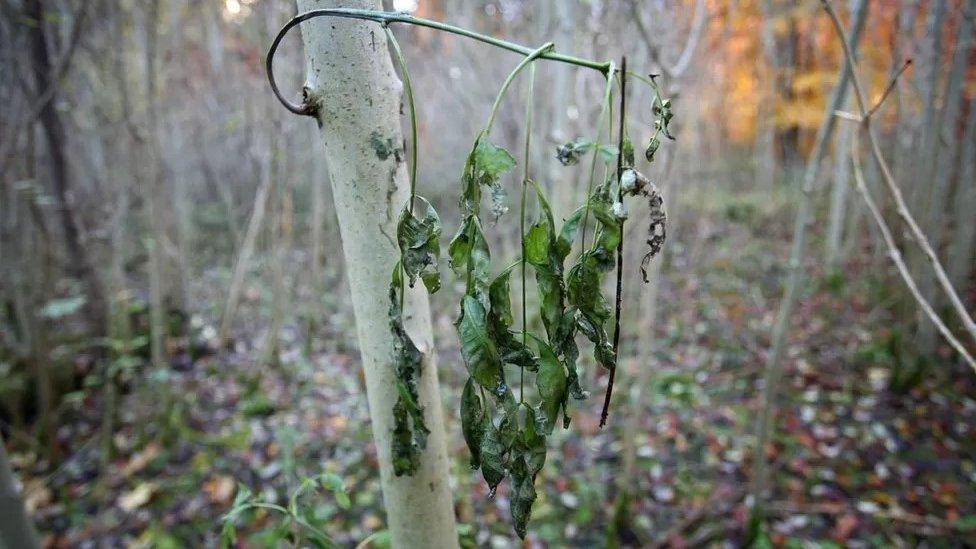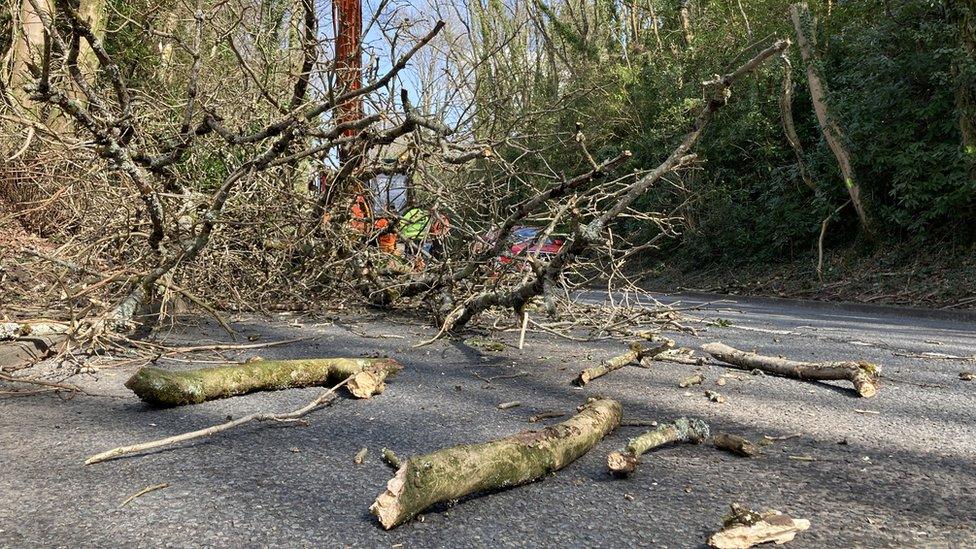Thousands of Worcester's trees could be lost in disease fight
- Published

Ash dieback is a fungal disease that can lead to leaf loss and dead branches
An estimated 5,000 ash trees could be lost in Worcester over the next 10 years due to fungal disease ash dieback.
Worcester City Council said work was about to begin to remove affected trees which, as the disease progressed, posed a safety risk due to dead branches.
A large ash next to Astwood Cemetery will be among the first to be felled.
The council said millions of ash trees had already been cut down across the country in response to the issue.
According to the government, the majority of native ash trees will exhibit symptoms , externalbut not all will die.
The council said felled trees in Worcester would be replaced by other varieties and saplings to promote biodiversity, although it planned to collect seeds from the trees that showed resistance in the hope of new viable ash growth and restoration.

Up to 5,000 trees on council-owned land could be lost
"While it is sad to see the loss of so many trees in the city, it is vital that we deal with the problem of ash dieback as swiftly as possible to prevent spread and save as many trees as we can," said councillor Andy Stafford, from the authority's environment committee.
"In order to try and minimise the impact of ash dieback then we will need to remove diseased ash trees, but we are confident that as we continue in our programme of planting new trees, we can ensure that our wooded areas are the best possible habitats for flora and fauna."
As well as the large tree near Astwood Cemetery, the council has also earmarked mature trees in Diglis Park, Dines Green and Gheluvelt Park for removal.

Follow BBC West Midlands on Facebook, external, Twitter, external and Instagram, external. Send your story ideas to: newsonline.westmidlands@bbc.co.uk, external
Related topics
- Published26 January 2023

- Published28 October 2022

- Published21 April 2022

- Published31 March 2022
